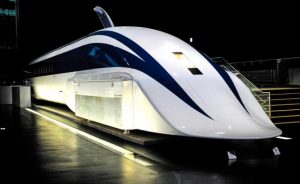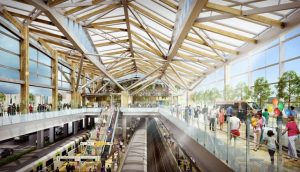
Fig.1. Tokyo Subway Route Map, obtained from http://www.tokyometro.jp/en/subwaymap/
David Harvey Time-space compression which is an idea rooted in Karl Marx’s theory of annihilation of time and space relates to any phenomenon that alters the qualities and relationship between space and time, often occurring as a result of technological innovations (example of Japan Shinkansen and its transportation system). In Tokyo, Rail is the primary mode of transport. Greater Tokyo has the most extensive urban railway network and the most used in the world with 40 million passengers (some tallied twice) in the metro area daily.
As we are approaching Tokyo 2020 Olympics, the Japanese government and the Japanese Olympic Committee would need improve their already improved railway system to cater their daily amount of passengers but with addition of influx of athletes (12,000) and tourists from expected nations of 207. The Tokyo metro system and JR East have been named the official partners in the Tokyo 2020 Sponsorship programme where their goal it to contribute to the growing enthusiasm of The Olympics by providing safe and comfortable transportation services. Here are just some of improvements in regards to railway transportation that the government is implementing towards Tokyo 2020 Olympics:
The Inauguration of the Japanese Maglev- World’s Fastest Bullet Train
Although the Maglev is not planned to enter commercial operation until 2027, it is set to make its debut at the Tokyo Olympics. Maglev has broken Japan’s own high speed record as it could reach speeds more than 600 kilometers per hour. This will prove to compressed time and space with high speeds which were thought to be an impossible task during the Tokyo 1964 olympics.
In current times, it would take around 100 minutes (currently the fastest) to reach Nagoya from Tokyo on the Nozomi train. Fortunately, the Chuo Shinkansen line is planned to link Tokyo and Nagoya by the year 2027 in which the trip would only take forty minutes – a staggering improvement of 60% in speed.

Fig.2. Maglev bullet train prototype, obtained from https://www.jrailpass.com/blog/maglev-bullet-train
Improvement of Japan’s Harujuku, Sendagaya and Shinanomachi Station
JR East has confirmed to upgrade Harujuku Station on the Yamanote Loop line and Sendagaya and Shinanomachi stations on the Chūō-Sobu Line. Upgrades (total cost of 250 billion yen or US$ 2.3 billion) include implementation of new barrier-free facilities and expansion of concourses and ticket gates, are expected to be completed in time for the 2020 Tokyo Olympics. This new plans are designed to improve passenger flow and dramatically alleviating congestion. The new designs of the stations will include a wider concourse and ticket gate area, along with elevators and new and more spacious amenities.

Fig.3. Proposed design of the new Harujuku Station, obtained from https://en.rocketnews24.com/2016/06/08/japans-harajuku-station-to-be-rebuilt-ahead-of-2020-tokyo-olympics/
Adding a new Station on the Yamanote Line
This new station will be located between Shinagawa and Tamachi Stations slated for completion in spring 2020, and will provide access to Haneda Airport Monorail and the JR Keihin-Tohoku line.
This new station will be four stories in height and the public area will have a large screen for the viewing of the games. This new station is set to open up the region to the global as this project was set to be part of the urban revitalization plan for the Sinagawa area to be the Tokyo’s genkan (reception area) to the world.
 Fig.4. Architect Kengo Kuma has designed the new station on Tokyo’s JR Yamanote Line, obtained from https://www.jrailpass.com/blog/tokyo-2020-olympics
Fig.4. Architect Kengo Kuma has designed the new station on Tokyo’s JR Yamanote Line, obtained from https://www.jrailpass.com/blog/tokyo-2020-olympics
Full Mobile Access to Tokyo’s Subway System
One of Tokyo 2020’s plan is to provide universal mobile access in the Tokyo Metro subway system that would add further momentum to their efforts to leverage innovation in the world’s most technologically advanced major capital. One of the current phase of mobile expansion included extending the access on the Ginza and Marunouchi lines in the heart of the city.
International guests are able obtain a wide variety of Tokyo 2020 Olympics information through the closed-circuit TV which are available in most subways stations and railcars.

Fig.5. Tokolo, Asao. Tokyo 2020 logo. 2016, Accessed 24 Oct. 2017.
Overall, Japan has contributed to the advancement towards railway infrastructure strategically to accomodate tourists, visitors and atheletes etc. in the upcoming Tokyo 2020 Olympics, while providing innovative transportation that is safe and comfortable for everyone.
References
Japan Rail Pass.** (2017). Tokyo 2020 Olympics With The Japan Rail Pass [Website]. Retrieved from https://www.jrailpass.com/blog/tokyo-2020-olympics
Mcgee, O. (2016). Japan’s Harajuku Station To Be Rebuilt Ahead Of 2020 Tokyo Olympics. Sora News [Website]. https://en.rocketnews24.com/2016/06/08/japans-harajuku-station-to-be-rebuilt-ahead-of-2020-tokyo-olympics/
The Tokyo Organizing Committee Of The Olympic And The Paralympic Games (2013). News: Tokyo’s Subway System Launches Full Mobile Access [Website]. Retrieved from https://tokyo2020.jp/en/news/sponsor/20160607-01.html
The Tokyo Organizing Committee Of The Olympic And The Paralympic Games (2017). News: Tokyo 2020 Welcomes Two Railway Companies As Official Partners [Website]. Retrieved from https://tokyo2020.jp/en/news/sponsor/20160607-01.html